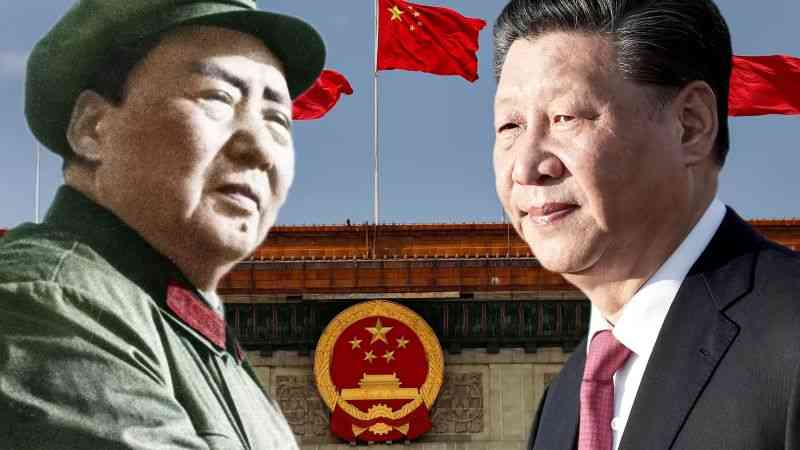
RESPECTED Chinese philosopher, Confucius, is reported to have once said that: “The three main responsibilities of government are to provide enough food, sufficient military equipment and maintain the confidence of the people in the ruler”.
When asked of the order of importance, it is said that, he went on to state that, military equipment could be abandoned first, then food, but never confidence in the ruler. In his perspective, the people's assurance in the ruler, is the very foundation of the state, without which, it cannot exist. Thousands of years after Confucius, these remain as some of the key principles which influence the Chinese government's administration.
China's ability to take about 770 million citizens out of extreme poverty, from only 1978 to 2013, shows the conviction of the country’s leadership in providing a decent living and retaining the trust of citizens.
However, by 2014, there were still about 100 million people left behind. As a result, President Xi Jinping introduced the Targeted Poverty Alleviation (TPA) programme, which fulfilled the objective of taking those (100 million) citizens out of absolute poverty. The TPA ran from 2014- 2020.
As a result of its success, by the end of 2020, there were essentially no people in China living in extreme poverty (on less than US$1,69 per day). It is crucial to also highlight that China's poverty line is lower than the World Bank's US$1,90 per day, since the dollar has greater buying power in China than in other countries.
If the Zimbabwean government is similarly eager to reduce domestic levels of poverty, then it will prove useful for local policymakers to understand the Chinese experience.
From Mao Zedong to Xi Jinping
It is widely understood that Mao Zedong laid the foundations for much of China's broad-based economic progress. His controversial land reforms, massive literacy campaigns and health reforms, resulted in higher productivity and inclusive economic growth, especially in the years after his reign.
- The brains behind Matavire’s immortalisation
- Red Cross work remembered
- All set for inaugural job fair
- Community trailblazers: Dr Guramatunhu: A hard-driving achiever yearning for better Zim
Keep Reading
When Deng Xiaoping became president in 1978, he focused on improving the country's productive capacity through reducing government-control on prices, foreign investment, state-owned enterprises, etc.
The reforms were also a great success, and enjoyed beyond his leadership's tenure. Resultantly, from 1978-2017, the Chinese economy grew at an average rate of 9,5% per year. This means that, it grew in size by almost 35 times during that period.
The number of people living in abject poverty also sharply decreased from about 770 million in 1978 (80% of the population, that time) to 100 million in 2014 (7% of the population, at the time).
With only 7% of people living in absolute poverty, the Chinese government could have focused on more ambitious goals such as maintaining robust economic growth. Nevertheless, in order to make concrete the citizens' trust in the leadership, the Chinese government went on to introduce the TPA in 2014, which was aimed at addressing the vulnerable 7%.
Targeted poverty alleviation
Cadre deployment and funding: In China, political party cadres are not promoted without prior evaluation. This means that in order for one to rise through the ranks, they have to prove their abilities, first. As a result, more than three million cadres were dispatched to participate in the anti-poverty (TPA) campaign. Most of these were assigned to the rural and remote parts of the country, since that is where deep poverty was mostly present.
The cadres had to survey citizens, reside in the same areas as the poor residents (most of which were decrepit), gain their trust, study the context of localised poverty, prescribe solutions, mobilise resources from government and ensure that the resources were applied to sustainably lift the living standards of the poor residents.
Their performance was evaluated using scorecards, which assessed metrics such as income per capita of the rural citizens, portion of population in poverty, etc.
Since it was a targeted campaign, each poor person in the country was to be identified, tracked and assisted. At the launch of the programme in 2014, almost a million party cadres (800 000) were sent to survey every household across China.
In 2015, more than two million followed-up to verify the accuracy of the data collected by the initial surveyors. Thereafter, three million party cadres were sent to live in poor villages, forming 255 000 teams, which were resident on-site.
Every poor household was assigned a cadre. The cadres lived in those humble places for between one to three years. To prove the risks, which the cadres encountered, China's State Council Information Office reported that more than 1 800 party members and government officials lost their lives during the campaign.
It is also reported that during the period of the TPA campaign (eight years), President Xi Jinping made about 50 trips to inspect progress being made, in the poorer parts of China. That is equivalent to about one trip each two months. This would also translate to many more than he made in support of any other initiative.
In the Zimbabwean context, the ruling party, may find it worthwhile to similarly use an appraisal system as a basis for promotion. Clearly, when there are performance metrics to be fulfilled, cadres will be conditioned to deliver results.
Assuming that the goals of the party are completely tied to national development, this would translate to progress in the country's development plans, such as NDS1, for example. It is certainly time to go beyond promoting party members based on how well they can declare the party's "slogan" or how much they can dance.
Funding: The TPA made a noticeable dent on government finances. Some experts maintain that the commitment of both human and financial resources towards the programme may have slowed China's gross domestic product (GDP) growth rate in the same period.
If the Chinese government had prioritised economic growth (GDP), the nation would have achieved notable milestones at a global level. However, governance in China seems to be based more on the overall good, instead of success for a few.
The government made direct expenditures of ¥1,6 trillion (US$218 billion) over the course of the initiative. Additionally, loans of ¥9,2 trillion (US$1,2 trillion) were also made for targeted poverty alleviation purposes. This includes ¥450 billion (US$61 billion), in guaranteed micro-credit to, mostly impoverished women. It is reported that a total of ¥14 trillion (US$1,9 trillion) was spent, during the campaign.
Since this figure is more than 15% of China's GDP in 2017 (halfway through the programme), this shows the commitment that the CPC had towards the campaign. Tellingly, Zimbabwe will need to firstly achieve a level of economic growth which can create such fiscal space (Treasury's capacity). Macroeconomic stability will also be crucial in order to emulate the Chinese anti-poverty efforts. This means that, price and exchange rate stability, are also a foundational requirement, before such programmes can be successfully executed.
Mechanisms
Five key strategies were employed to achieve the goals of the TPA. These cover the following areas: industry, relocation, ecological compensation, education and social assistance.
Industry refers to the provision of infrastructure, skills-training, productive equipment, new markets for local products and access to financing (loans, microcredit and subsidies). Poor villagers were capacitated to practice commercial agriculture, manufacture goods and build modern SMEs. Government-guaranteed debt from private institutions was made available. Additionally, after the initiative, 98% of the villages had access to fibre internet connectivity. This means that they could also sell their commodities on major online platforms. The overall impact of this was that the poor, especially those in rural areas, became highly productive (financially).
Relocation was mostly for citizens in areas where infrastructure and economic development were unthinkable. These were hostile and precarious natural environments such as deserts and hills. In such cases, entire settlements and villages were relocated. In that regard, 9,6 million people were relocated in 2,66 million new housing units, as part of the initiative.
Ecological compensation largely focused on reforestation. As a result, since 2013, 4,97 million hectares of farmland in poor areas, were converted into forests and grasslands. Consequently, a total of 1,1 million people became forest rangers, protecting against loggers and natural catastrophes such as forest fires. Around 23 000 poverty-alleviation afforestation cooperatives were formed. Poverty alleviation, was therefore, mixed with the need to address pressing issues, such as, climate change.
Education. New schools were built whilst existing ones were improved. The quality of education in rural areas was upgraded, with a special focus on the teachers. For instance, the National Training Programme, added an additional 17 million rural teachers to the less developed regions.
Social assistance, includes the Minimum Living Guarantee System, also known as “dibao”. In this scheme, a subsistence allowance of ¥5 962 (US$814) per year is given to those who fit a predetermined criteria. As of 2022, the initiative had about 19 million beneficiaries. Basic healthcare insurance for the poor is also now over 99,9% as facilities and healthcare workers have been assigned to virtually every area where there are citizens.
As can be noted, lessons abound from the Chinese experience on how the Zimbabwean government may design its own responses to domestic poverty.
Innovation will also be vital since Zimbabwe does not have as much capacity to fund some key anti-poverty projects, when compared to China.
For example, in order to encourage rural infrastructural development, free or discounted title-deeds may be issued to those willing to construct, high-value commercial or residential structures.
Rural dwellers may also be urged to engage in export agriculture, which has more rewards than the typical grains.
Moreover, secondary schools could be expanded into vocational training centres, where locals learn practical, income-generating skills.
Overall, macroeconomic stability and economic growth will be key in order for Zimbabwe to make significant progress in the fight against abject poverty.
- Tutani is a political economy analyst. — [email protected]










